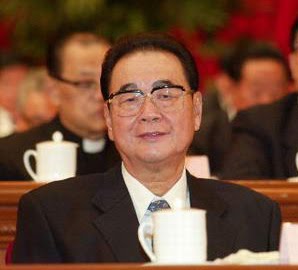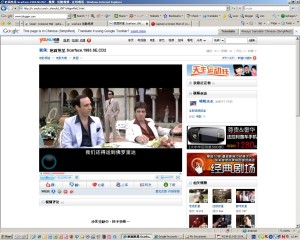 As a vegetarian I do not frequent the many McDonald’s fastfood joints that can be found in China and which turn the slim people obese, just as they did with the American and European populations. I am not really certain what is on sale inside a McDonald’s, but when I was in Shenzhen near the beach I was surprised to see that McDonald’s has been diversifying into toe slippers. You could say, well that is not really diversifying, because toes could be considered meat too, although not dead meat. Then again, maybe it was not the fast food chain’s idea to put its trademark on the slippers. Let’s assume that they did not. What could a(n) (in)famous company such as McDonald’s do against such unauthorised use of their mark?
As a vegetarian I do not frequent the many McDonald’s fastfood joints that can be found in China and which turn the slim people obese, just as they did with the American and European populations. I am not really certain what is on sale inside a McDonald’s, but when I was in Shenzhen near the beach I was surprised to see that McDonald’s has been diversifying into toe slippers. You could say, well that is not really diversifying, because toes could be considered meat too, although not dead meat. Then again, maybe it was not the fast food chain’s idea to put its trademark on the slippers. Let’s assume that they did not. What could a(n) (in)famous company such as McDonald’s do against such unauthorised use of their mark?
April 23, 2009, China’s Supreme People’s Court promulgated the ‘Interpretation on the Application of the Law Concerning Several Issuels Regarding the Trials of Civil Disputes Relating to the Protection of Famous Trademarks’ (Judicial Interpretation on Famous Trademarks judicial interpretation).
So since that time the judicial interpretation clarifies that a famous trademarks registered in certain product/service classes is protected against a mark that is identical or similar but on products/services that are dissimilar.
“If the plaintiff files a motion to enjoin the defendant from using a trademark, which is identical with or similar to its famous registered trademark, or enterprise name on dissimilar commodities, the people’s court shall, in light of the concrete circumstance of the case, make a ruling after comprehensively taking into account the following factors:
1. the distinctiveness of the said famous trademark;
2. how well the famous trademark is known by the relevant general public that use the commodities using the trademark against which the lawsuit is filed or using the enterprise name;
3. the connection between the commodities using the famous trademark and the commodities using the trademark against which the lawsuit is filed or using the enterprise name;
4. other relevant factors.”
This is based on China’s WTO obligations to comply to TRIPs.
“Article 6bis of the Paris Convention (1967) shall apply, mutatus mutandis, to goods or services which ar not similar to those in respect of which a trademark is registered, provided that use of that trademark in relation to those goods or services would indicate a connection between those goods or services and the owner of the registered trademark and provided that the interests of the owner of the registered trademark are likeley to be damaged by such use.”
This goes further than article 6bis of the Paris Convention of which China is a member since 1985.
(1) “The countries of the Union undertake, ex officio if their legislation so permits, or at the request of an interested party, to refuse or to cancel the registration, and to prohibitthe use, of a trademark which constitutes a reproduction, an imitation, or a translation, liable to create confusion of a mark considered by the competent authority of the country of registration or use to be well known in that country as being already the mark of a person entitled to the benefits of this Convention and used for identical or similar goods. These provisions shall also apply when the essential partof the mark constitutes a reproduction of any such well-known mark or an imitation liable to create confusion therewith.
(2) A period of at least five years from the date of registration shall be allowed for requesting the cancellation of such a mark. The countries of the Union may provide for a period within which the prohibition of use must be requested.
(3) No time limit shall be fixed for requesting the cancellation or the prohibition of the use of marks registered or used in bad faith.”
So if we apply article 10 Judicial Interpretation on Famous Trademarks.
(1) I think we can come to the conclusion that McDonald’s is a distinctive mark;
(2) And that it is well known to the relevant general public (because of its ubiquitous existence); (3) So what exactly is the connection between the commodoties of the famous mark and the dissimilar commodities of the mark that might infringe upon it? What is the connection between food and footwear? McDonald’s could argue that the association with toe slippers is not conducive for fueling an appetite for its food, save for some foot fetishists. And this could dilute the brand.
(4) Other relevant factors, could be perhaps the popularity of the McDonald’s toe slippers. Are they sold all over China, or just at the beach of Shenzhen. In other words the extend of the (potential) damage for the fast food chain.
Photo/text Danny Friedmann


























